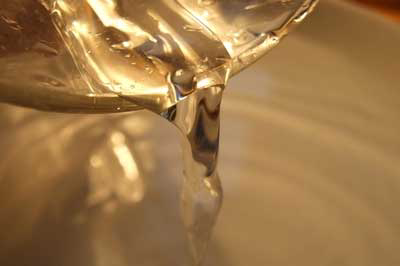Effect of crude glycerin on pelleting and pig growth

Adding crude glycerin to the diet before pelleting improved feed mill production efficiency. This was concluded by a research team from the Faculty of Veterinary Science at the University of Murcia in Spain.
Three experiments were conducted to determine the effects of dietary addition of crude glycerin on pellet production efficiency and to evaluate its effect on growth performance and digestibility in growing-finishing pigs. Three dietary treatments were created by the addition of 0, 2.5, or 5% crude glycerin to barley-soybean meal-based diet, and four batches of each dietary treatment (two each for grower and finisher diets) were prepared. In the manufacturing process, crude glycerin supplementation linearly increased the feeder speed and production rate , resulting in a 20-29% improvement in the feed production rate compared with the control. Production efficiency (kg/kWh) increased linearly as the level of crude glycerin in feed increased.
A growth experiment was performed with 240 barrows (30 ± 1 kg initial BW) using a two-phase feeding programme over a 12-wk period with four pens per treatment and 20 pigs per pen. On the last day of the growth experiment, blood samples were collected to determine circulating glucose, fructosamine, and IGF-1 concentrations. Overall growth performance was not affected by dietary treatment, and there was no effect of dietary treatment on any plasma metabolite measured. A digestibility experiment involving nine male pigs housed in metabolic cages was used to determine the coefficients of apparent fecal digestibility and N and mineral balances. Pigs were assigned to one of the three diets in each feeding period using a 3 × 3 Latin square arrangement of treatments (43 ± 3 and 74 ± 3 kg initial BW in the growing and finishing periods, respectively). In both feeding periods, faecal digestibility of OM and ether extract were affected by dietary treatment, increasing linearly with increasing crude glycerin levels. However, neither CP digestibility nor N retention was affected by the glycerin content in either the growing or finishing period. Digestibilities and balance of Ca and P showed opposite tendencies with the variations in crude glycerin content, which either decreased or increased depending on the feeding period.
In conclusion, adding crude glycerin to the diet before pelleting improved feed mill production efficiency. The addition of crude glycerin up to 5% in the diet of growing-finishing pigs had no effect on growth performance, blood metabolites, nutrient digestibility, and N balance, but more studies are needed to determine how crude glycerin affects mineral metabolism and balance.
[Source: Journal of Animal Science, August 2013]











